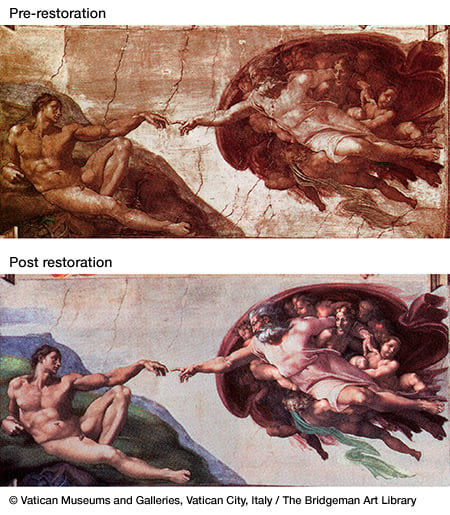Look at the Mona Lisa, for instance. Most tend to think of her having a dark complexion, dark hair. Few notice that she wears a veil over her hair, that is actually more medium brown than black. It is doubtful that she will ever be returned to her original colour, a restoration of that magnitude would be too hazardous to the most famous painted image. But, science has predicted what she might have looked like, and it is interesting to see:
The cleaning of the Michelangelo's work in the Sistine Chapel remains one of the most controversial restoration projects in history; whether too much colour was removed is still a matter of debate. Prior to restoration it was extremely dirty, and its not hard to imagine why: it is painted on the ceiling of a church, where candles had been used for centuries, producing smoke, which, as we all know, rises. Many were shocked to see the colours in all their saturated glory after the resoration was complete. Below are some pre and post-restoration images showing this contrast.
Please click on any of the images above to link to the website of their origin, which will provide even more information on this subject.








No comments:
Post a Comment